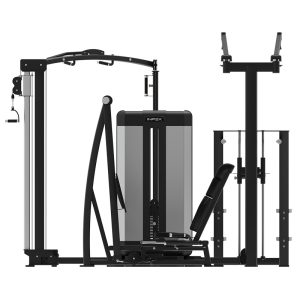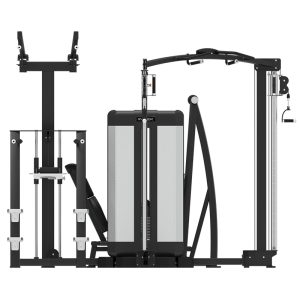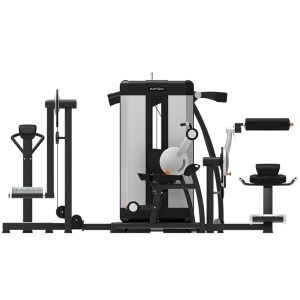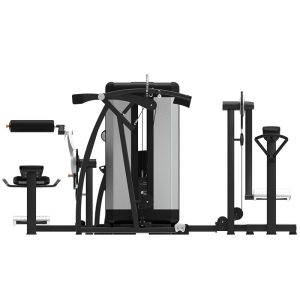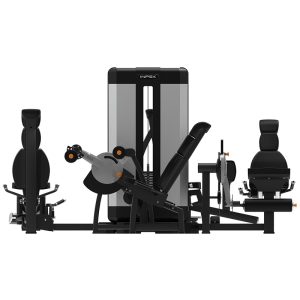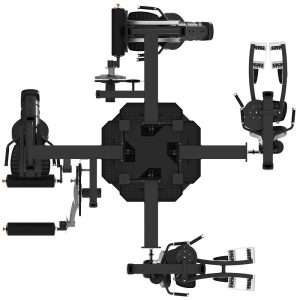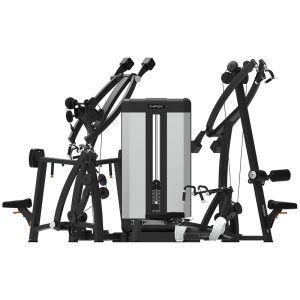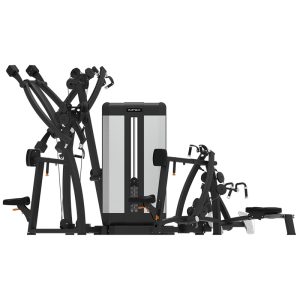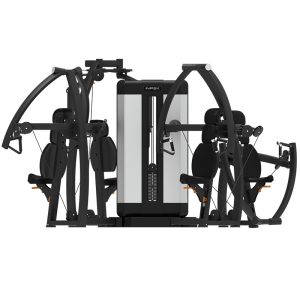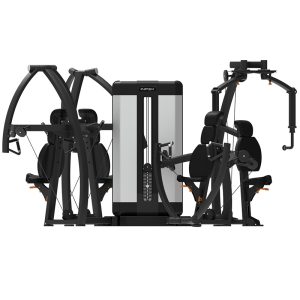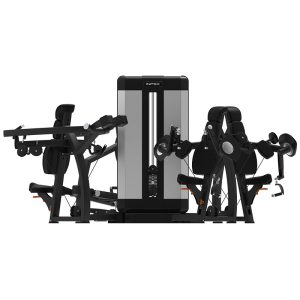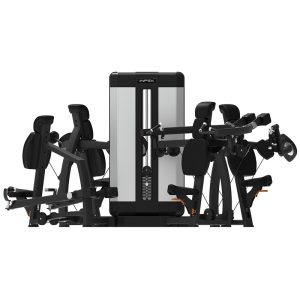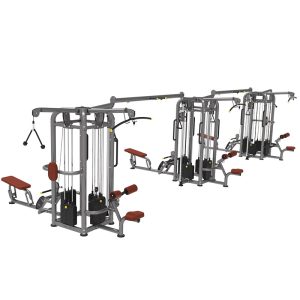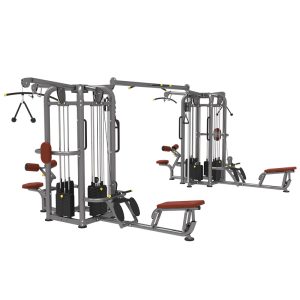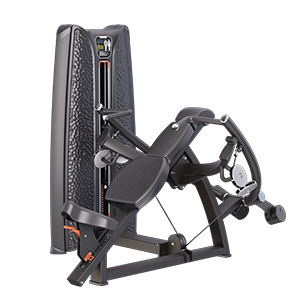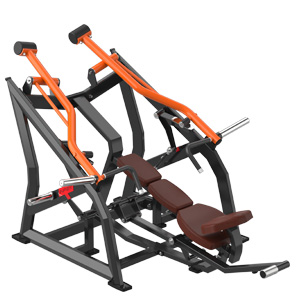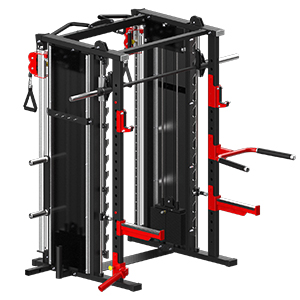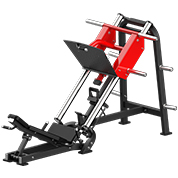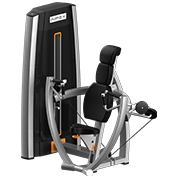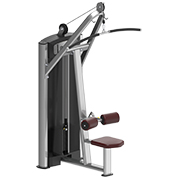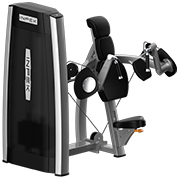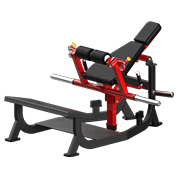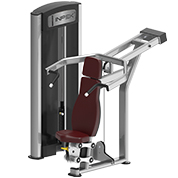- Home
- /
- Gym Multi
Gym Multi: All-in-One Full Body Workout Machines
Gym multi machines are versatile fitness solutions that integrate multiple workout stations into a single unit, allowing users to perform a variety of exercises targeting different muscle groups. This equipment is essential for commercial gyms where space efficiency is paramount. Multi-station setups maximize floor area while enabling multiple users to access various workouts simultaneously, making them ideal for busy facilities. Inpek Fitness offers a comprehensive range of gym multi equipment designed to meet the diverse needs of fitness facilities. Our product lineup includes: Four-Station Trainer: Ideal for smaller gyms, providing essential workout options in a compact design. Six-Station Trainer: Expands exercise variety while maintaining space efficiency. Nine-Station Trainer: Perfect for medium to large facilities, accommodating more users and a wider range of exercises. Fourteen-Station Trainer: Maximizes capacity for high-traffic gyms, supporting numerous simultaneous workouts. Three-Station Six-Function Trainer: Offers versatile training options with multiple functions per station. Four-Station Eight-Function Trainer: Enhances workout diversity with additional functions for comprehensive training. Combined Shoulder and Upper Arm Trainer: Targets upper body strength with integrated exercises. Combined Chest Trainer: Focuses on chest development through multiple exercise options. Combined Back Trainer: Strengthens the back with versatile workout configurations. Combined Leg Trainer: Facilitates lower body training with multiple exercise stations. Combined Trunk Trainer: Enhances core strength with dedicated trunk workout stations. Flying Bird Combination Trainer: Provides a unique combination of exercises for full-body training. Benefits of Inpek Fitness Gym Multi Equipment: Versatility: Our gym multi machines support a wide range of exercises, promoting varied workouts that streamline exercise sessions. Efficiency: Users can switch between exercises effortlessly, enhancing overall workout efficiency and allowing for effective use of time. Space Optimization: Multi-station setups maximize floor space, making them perfect for gyms with limited space. Accessibility: Designed for all fitness levels, our machines feature user-friendly controls and adjustable components, making them accessible to beginners and advanced athletes alike. Engagement: By offering diverse workout options, our equipment encourages users to explore new movements, keeping their fitness routines engaging and motivating. Durability and Quality: Inpek Fitness products are built with high-quality materials to ensure longevity and reliable performance in high-traffic environments. By incorporating Inpek Fitness's gym multi equipment into your facility, you can provide an effective and engaging workout experience for all users while optimizing your gym’s space and capacity. Our diverse product range ensures that you can find the perfect solution to meet the specific needs of your fitness facility, enhancing both user satisfaction and operational efficiency.
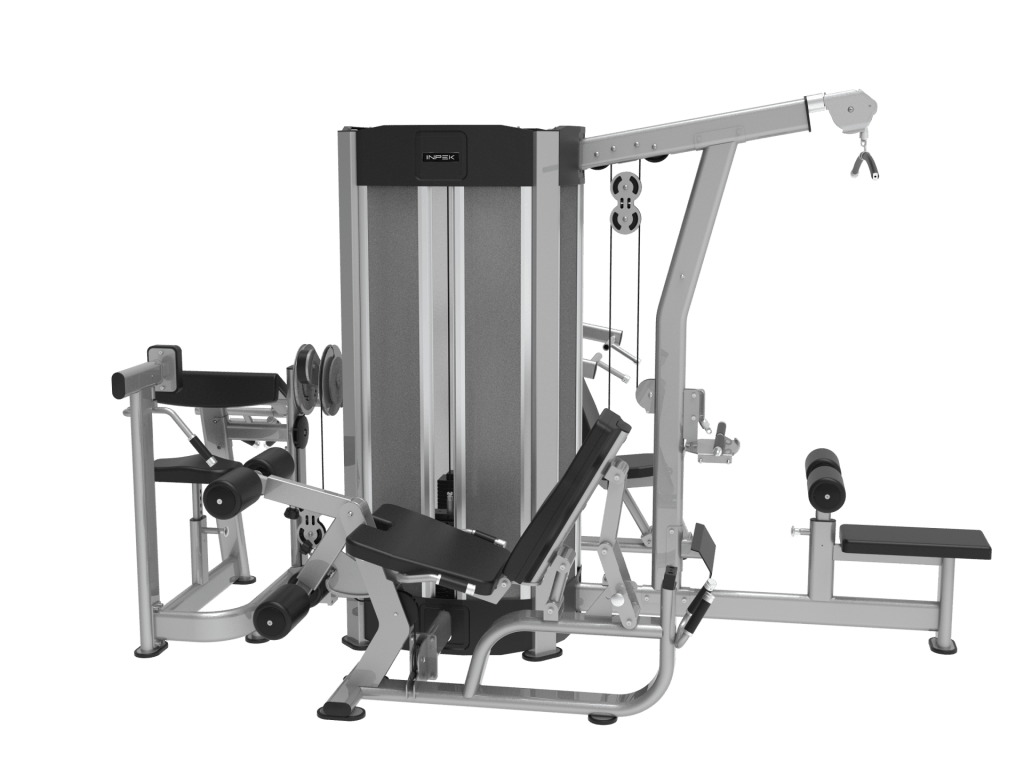
Multifunctional gym Series
The 53+62 Multifunctional gym Series offers a variety of combinations from three to fourteen stations, allowing for a variety of distinctive fitness exercises. Cool exterior design, precise movement trajectory, smooth strength experience, design daring comfort, perfect combination of precise materials and manufacturing, making strength training more scientific and effective. Adopting a sturdy welded frame. It is durable and can meet the needs of busy fitness institutions.

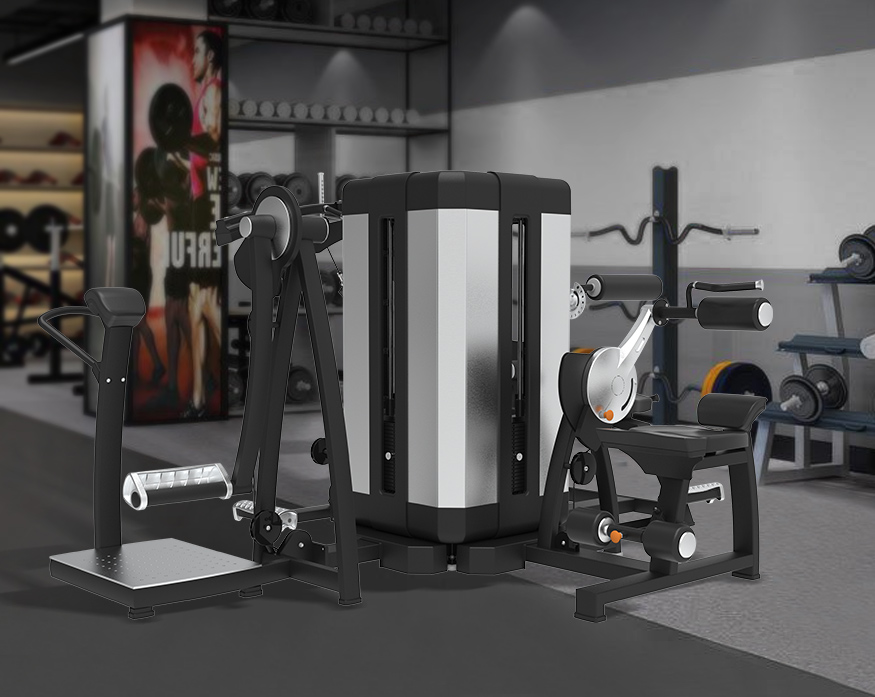
Commercial Gym Multi Equipment
Description of Commercial Gym Multi Equipment
Commercial gym multi equipment refers to versatile workout machines designed to accommodate the high demands of fitness facilities. These machines are engineered for heavy usage, making them ideal for environments such as gyms, health clubs, and training centers. The design of these machines allows for a range of exercises, enabling users to target multiple muscle groups in a single workout session. With options such as the gym machine multi, users can perform exercises like leg presses, chest presses, lat pulldowns, and more, all in one compact setup. This versatility is essential for maximizing workout efficiency, especially in commercial settings where space and time are at a premium.
Key Features to Consider
When investing in commercial gym multi equipment, several key features should be considered to ensure that the equipment meets the needs of users and the facility.
Durability and Build Quality: Look for machines constructed from high-quality materials, such as heavy-duty steel, that can withstand the rigors of constant use. Machines that are built to last will require less maintenance and offer a better return on investment over time.
Space Efficiency and Design: Multi station gyms are designed to provide a comprehensive workout without occupying excessive floor space. A well-designed machine should fit comfortably in the gym layout while allowing for easy access and movement for users. Compact designs that combine several exercise stations into one unit help maximize gym space and improve the overall user experience.
Variety of Resistance Systems: Consider the types of resistance systems available on the equipment. Options such as weight stacks, plate-loaded systems, and pneumatic or hydraulic mechanisms allow users to tailor their workouts to their individual fitness levels. This variety not only enhances the training experience but also encourages users to progress over time.
Space Efficiency: Multi-station gym equipment is designed to maximize the use of available space by combining multiple workout stations into one compact machine. This is particularly advantageous for smaller gyms, allowing users to perform a variety of exercises without needing separate machines for each movement. Versatility: One of the key benefits of multi-station gym equipment is its versatility. These machines typically offer a range of exercises targeting different muscle groups, such as chest presses, leg extensions, lat pulldowns, and cable crossovers. This diversity enables users to perform full-body workouts using a single piece of equipment, making it suitable for individuals of all fitness levels. Accommodates Multiple Users: Multi-station gym equipment is ideal for commercial settings as it can accommodate multiple users simultaneously. This feature helps to maximize gym capacity during peak hours, reducing wait times for machines and enhancing the overall experience for gym members. Streamlined Workouts: With multi-station gyms, users can seamlessly transition between different exercises without changing machines. This streamlined approach not only saves time but also keeps workouts engaging and efficient, allowing individuals to complete their routines more quickly. Enhanced User Experience: The ability to target various muscle groups and perform multiple exercises in one machine enhances the overall exercise experience. Users can create diverse workout routines that can help prevent plateaus and maintain motivation, contributing to better fitness outcomes. Safety and Stability: Multi-station gym equipment often features guided movements and built-in safety mechanisms, making it safer for users, especially beginners. The design helps maintain proper form during exercises, reducing the risk of injury. Cost-Effective: Investing in multi-station gym equipment can be more cost-effective than purchasing individual machines for each type of exercise. These machines offer a comprehensive solution for strength training and functional fitness, making them a valuable addition to any gym or fitness facility.Benefits of Multi-Station Gym Equipment
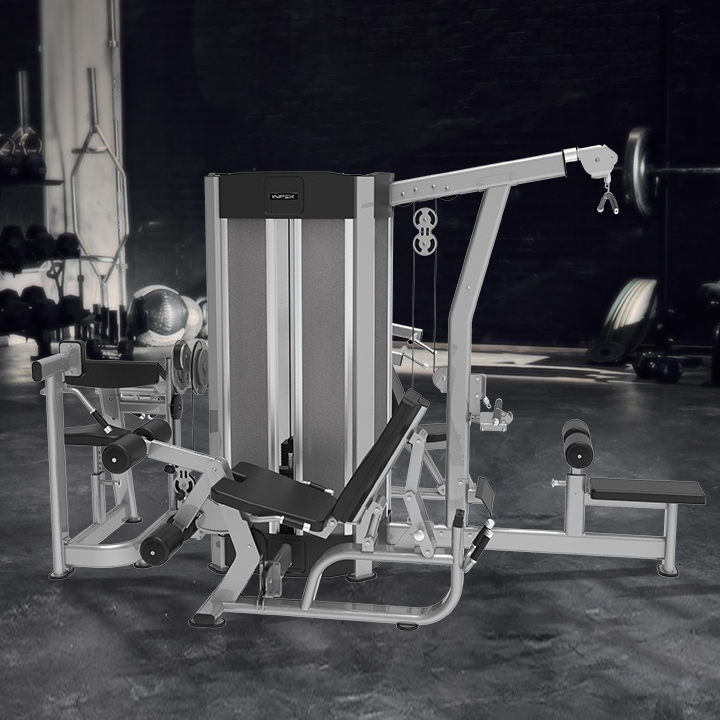
Best Commercial Gym Multi: Essential Features for Every Fitness Facility
When choosing the best commercial gym multi, it’s important to prioritize both versatility and durability to meet the needs of all gym members. These machines should be reliable, easy to use, and capable of accommodating a wide variety of exercises. Here’s a breakdown of essential features and benefits:
Wide Range of Exercises:
A top-tier gym multi machine should support multiple exercises targeting various muscle groups, including legs, back, chest, arms, and shoulders. The versatility allows users to perform compound and isolation exercises, making it a valuable addition to any fitness facility.
Adjustability and Customization:
To cater to different body types and fitness levels, the best gym multi machines offer adjustable seats, handles, and weights. This feature ensures comfort and proper form, reducing the risk of injury and improving exercise efficiency.
Heavy Duty Build Quality:
Commercial gym equipment is subjected to frequent and intense use, so a multi machine must be built with high-quality materials such as steel frames and durable upholstery. A sturdy design ensures longevity and smooth performance under heavy use.
Space Efficiency:
Space is often limited in commercial gyms, so selecting a multi gym machine that offers maximum functionality while occupying minimal space is crucial. Many gym multi machines feature compact designs that combine various functions into one unit.
Smooth Functionality:
The best commercial multi gyms come with a smooth, fluid motion to reduce friction and ensure a quiet, efficient workout. Quality pulleys and cables enhance performance, making each exercise feel seamless and reducing wear and tear over time.
Safety Features:
To maintain user safety, look for features like secure weight locking mechanisms, non-slip footrests, and reliable cable systems. Safety should always be a top priority, especially in busy commercial environments.
Durability and Warranty:
Choose a gym multi with a strong warranty offering protection against manufacturing defects and wear. A long-term warranty indicates the manufacturer’s confidence in their product’s durability and performance.
These features combine to create the best commercial gym multi, ensuring that fitness centers provide a versatile, durable, and safe workout experience for all users.
Collaborate with Inpek Fitness Experts for Your Commercial Gym Projects
Looking to enhance your gym with premium equipment? Have inquiries or ideas? Complete the form below to engage with our expert team. We’ll work with you to realize your fitness facility goals efficiently and effectively.
FAQs about Gym Multi
What does multi-gym mean?
A multi-gym is a versatile piece of fitness equipment designed to offer a variety of strength training exercises within a single machine. These systems typically feature multiple workout stations that target different muscle groups, such as the chest, back, legs, and arms. A multi-gym allows users to perform various exercises, including leg presses, lat pulldowns, chest presses, and cable exercises, all in one compact unit. This design is particularly beneficial for commercial fitness facilities looking to maximize equipment efficiency. Multi-gyms often come with adjustable weight stacks, enabling users to tailor the resistance to their fitness levels. Overall, multi-gyms provide a comprehensive solution for strength training, catering to beginners and experienced lifters alike by offering an efficient way to engage in a full-body workout without the need for multiple machines.
How much space for a multi-gym?
The space required for a multi-gym can vary significantly based on the specific model and its design. On average, most multi-gym setups require a space ranging from 5 to 10 square feet, but it's essential to consider the dimensions of the equipment itself and the required clearance around it for safe operation. When planning space for a multi-gym, consider not only the footprint of the machine but also additional room for movements during exercises. It’s advisable to leave a minimum of two feet of clearance on all sides to ensure comfortable access and safe usage. If the multi-gym includes an adjustable bench or attachments that require extra space during workouts, factor that into your calculations as well.
What does 3x mean in gym?
In a gym context, "3x" typically refers to a workout set notation indicating that an exercise should be performed for three sets. Each set consists of a specified number of repetitions (reps) of a particular exercise. For example, if a workout program states "3x10," it means the individual should complete three sets of ten repetitions of the exercise. This notation is common in strength training and bodybuilding programs, where multiple sets are used to build muscle and strength progressively. The purpose of performing multiple sets is to enhance muscle endurance and stimulate growth by increasing the time under tension for the muscles being targeted. When planning workouts, it's important to incorporate adequate rest between sets to allow for recovery, which can enhance performance in subsequent sets. Understanding these terms can help gym-goers effectively structure their workouts to achieve their fitness goals.
Is it worth buying a multi-gym?
Investing in a multi-gym can be worth it for many fitness enthusiasts, particularly those with limited space or budget constraints. Multi-gyms provide a comprehensive workout solution, allowing users to perform various exercises targeting multiple muscle groups from a single machine. This versatility can save money compared to purchasing individual machines or free weights. Additionally, multi-gyms are designed for safety and ease of use, making them suitable for beginners and more experienced lifters alike. They can offer a more guided approach to strength training, which is beneficial for those who may struggle with form when using free weights. However, whether a multi-gym is worth the investment ultimately depends on personal fitness goals, available space, and budget.
Are multi gyms better than free weights?
The question of whether multi-gyms are better than free weights often depends on individual fitness goals and preferences. Multi-gyms offer the advantage of versatility, allowing users to perform a wide range of exercises targeting various muscle groups in one compact machine. They typically provide guided movements, which can help users maintain proper form, particularly beneficial for beginners.
On the other hand, free weights are known for their ability to engage stabilizing muscles and promote functional strength. Exercises performed with free weights often allow for a greater range of motion and can be more challenging, as they require balance and coordination. Free weights also provide the opportunity for more varied exercises and can be more adaptable for advanced training programs.
Ultimately, the choice between multi-gyms and free weights comes down to personal preference, available space, and individual fitness goals. Many fitness enthusiasts find that a combination of both provides the best results.
What is the difference between multi-gym and iron gym?
The primary difference between a multi-gym and an iron gym lies in their design and intended use. A multi-gym is a comprehensive fitness machine that typically combines various exercise stations into one unit, allowing users to perform a wide range of strength training exercises targeting multiple muscle groups. Multi-gyms are designed for versatility and can accommodate various exercises, making them suitable for both beginners and experienced lifters.
In contrast, an iron gym often refers to a more simplistic setup, typically a pull-up bar or a basic piece of equipment designed for bodyweight exercises. Iron gyms are often portable and focus on exercises like pull-ups, chin-ups, and push-ups. They are ideal for those looking for a compact and affordable way to enhance their upper body strength and core stability. While both types of equipment can be effective for strength training, a multi-gym offers a broader range of exercises and capabilities compared to the more limited scope of an iron gym.
Are free weights better than multi-gym?
The debate between free weights and multi-gyms often comes down to individual goals and preferences, as both have their advantages and disadvantages. Free weights are highly effective for building muscle and strength because they require the engagement of stabilizing muscles, promoting balance and coordination. Exercises like squats, deadlifts, and bench presses performed with free weights allow for a greater range of motion and can often lead to better functional fitness outcomes. They also provide flexibility in exercise selection, enabling users to adapt their workouts according to their preferences and fitness levels.
On the other hand, multi-gyms offer a structured and guided approach to strength training. They are particularly beneficial for beginners who may not be familiar with proper form or technique, as they provide stability and safety during exercises.
Ultimately, whether free weights are better than a multi-gym depends on personal fitness goals, experience levels, and available space. Many individuals find that incorporating both into their fitness regimen yields the best results, allowing for a balanced approach to strength training.
Are multi gyms worth it?
Multi gyms can be a valuable investment for individuals looking to create a comprehensive workout experience in a single machine. They offer versatility by combining multiple workout stations into one compact unit, allowing users to perform a variety of exercises targeting different muscle groups. This can be particularly beneficial for those with limited space, as a multi gym eliminates the need for multiple pieces of equipment. Additionally, multi gyms are designed to accommodate users of all fitness levels, making them suitable for beginners who may benefit from the guided movements they provide. However, whether a multi gym is worth it ultimately depends on personal fitness goals. If you're focused on strength training and want a convenient way to work out in a small gym, a multi gym can be an excellent addition to your fitness regimen. It’s important to consider the specific features and resistance options of the machine to ensure it meets your training needs.
What is the difference between a multi gym and a power gym?
The difference between a multi gym and a power gym primarily lies in their design and purpose. A multi gym is a versatile piece of fitness equipment that combines several workout stations into one machine, allowing users to perform a wide range of exercises that target various muscle groups. Multi gyms often include features like adjustable weight stacks and guided movements, making them user-friendly and ideal for a diverse set of users. On the other hand, a power gym, often referred to as a power rack or power cage, focuses on heavy lifting and compound movements such as squats, bench presses, and deadlifts. Power gyms provide a more open design, allowing users to perform free weight exercises with added safety features like safety bars and adjustable height settings. While both types of equipment are effective for strength training, multi gyms offer more versatility for varied workouts, whereas power gyms are typically preferred by those looking to lift heavier weights and focus on specific strength-building exercises.
What is the most optimal gym split?
The most optimal gym split can vary based on individual goals, experience level, and workout preferences. However, a commonly recommended approach is the upper/lower body split, where workouts are divided into two sessions: one focusing on upper body exercises (chest, back, shoulders, arms) and the other on lower body exercises (quads, hamstrings, calves, glutes). This split allows for adequate recovery time between sessions while providing sufficient frequency for muscle groups to stimulate growth. Another popular split is the push/pull/legs routine, where workouts are divided into push exercises (chest, shoulders, triceps), pull exercises (back, biceps), and leg exercises. This split can be beneficial for individuals aiming for a balanced approach to strength training. Ultimately, the best gym split depends on your specific fitness goals, how many days a week you can commit to training, and your personal recovery ability. It’s important to choose a split that aligns with your lifestyle and allows for consistent progression.
What is the difference between multi-gym and normal gym?
The primary difference between a multi-gym and a normal gym lies in their structure and purpose. A multi-gym is a specific piece of equipment that combines multiple workout stations into one unit, enabling users to perform various exercises targeting different muscle groups. Multi gyms are designed for versatility and are often found in smaller fitness facilities, offering a compact solution for strength training. In contrast, a normal gym refers to a broader fitness facility that encompasses a wide range of equipment, including free weights, resistance machines, cardio machines, and functional training areas. Normal gyms typically provide a more extensive selection of workout options and amenities, such as group classes, personal training, and specialized equipment that may not be available in a multi-gym setup. While multi-gyms focus on combining several exercises into one machine, normal gyms offer diverse training environments that cater to various fitness needs and preferences.
What are the 2 types of gym body?
The two types of gym body often refer to different fitness goals and body compositions that individuals aim to achieve through their training. The first type is the muscle-focused body, which emphasizes hypertrophy, strength, and muscle growth. Individuals pursuing this body type typically engage in weight training routines that focus on lifting heavier weights with lower repetitions, often targeting specific muscle groups to build size and definition. This approach is common among bodybuilders and strength athletes who prioritize muscle development and aesthetics.
The second type is the functional fitness body, which focuses on overall physical performance, agility, and endurance. Individuals aiming for this body type often incorporate a mix of strength training, cardiovascular conditioning, and functional movements that improve daily physical activities. This training approach is designed to enhance core strength, stability, and coordination, making it beneficial for athletes and those looking to improve their overall fitness level for everyday tasks. Ultimately, the type of gym body an individual aims for will depend on their personal goals, preferences, and workout style.
Is a multi gym machine good?
A multi gym machine can be an excellent addition to any fitness routine, particularly for those who seek versatility and efficiency in their workouts. These machines are designed to accommodate various exercises, allowing users to target multiple muscle groups from a single unit. This capability makes multi gym machines ideal for individuals with limited space, as they combine the functions of several separate machines into one compact design. Additionally, multi gym machines often feature adjustable weight stacks, enabling users to tailor resistance levels according to their fitness abilities, which is beneficial for both beginners and experienced lifters.
Moreover, multi gym machines typically provide guided movements, which can enhance safety and help users maintain proper form during exercises, making them particularly useful for novices. They are suitable for a wide range of workouts, from strength training to rehabilitation exercises. Overall, a multi gym machine can be a great investment for those looking to create a comprehensive workout environment, improve their strength and conditioning, and enjoy a varied exercise experience.
What is a multi set gym?
A multi set gym typically refers to a type of fitness equipment or setup that allows users to perform multiple exercises targeting different muscle groups using a single machine or station. Multi set gyms often incorporate various stations that facilitate exercises such as weightlifting, resistance training, and functional movements, all within one compact unit. These machines can include features such as adjustable weights, pulleys, and benches, enabling users to perform diverse workouts efficiently. The versatility of multi set gyms makes them ideal for commercial settings, allowing individuals to engage in full-body workouts without needing multiple pieces of equipment. The design promotes a seamless transition between exercises, making it easier for users to target different muscle groups in one session. Additionally, multi set gyms can be beneficial for users of all fitness levels, from beginners looking to build strength to advanced athletes seeking to enhance their training routines.
How do you use a multi gym?
Using a multi gym is straightforward but requires a proper understanding of its features and equipment. First, begin by familiarizing yourself with the machine, ensuring you know where each exercise station is located. Most multi gyms come with instructions or diagrams indicating how to set up for various exercises. Adjust the weight to your desired resistance level using the weight stack or plates provided. When starting a workout, begin with a warm-up to prepare your muscles for exercise. Choose an exercise station and position yourself correctly—ensure your body is aligned properly to avoid injury. Perform the designated number of repetitions for each exercise, focusing on maintaining good form throughout. After completing a set, rest briefly before moving on to the next exercise station. Multi gyms allow you to switch exercises efficiently, making it easy to incorporate a variety of movements into your routine. It's recommended to consult a fitness professional if you're unsure about using the equipment to maximize effectiveness and ensure safety.
How do I choose a multi gym?
Choosing a multi gym involves several considerations to ensure that you select the right equipment for your fitness needs and available space. First, evaluate the available space in gym where the multi gym will be placed. Measure the area to ensure you choose a model that fits comfortably without overcrowding. Next, consider the features that are important to you. Look for a multi gym that offers a variety of exercise stations, including options for strength training, cable movements, and leg exercises. Adjustable weight stacks are also essential, allowing you to tailor resistance according to your fitness level. Durability is another critical factor; opt for high-quality materials that can withstand regular use, especially if multiple users will be utilizing the equipment. Reading user reviews and checking performance ratings can provide valuable insights into the reliability and effectiveness of specific multi gyms. Lastly, consider your budget, as prices can vary significantly based on brand and features. By carefully assessing these factors, you can select a multi gym that aligns with your fitness goals and enhances your workout experience.
What does multi-gym access at the gym mean?
Multi-gym access at a gym refers to the availability of various workout stations and equipment within a single facility that allows users to perform a wide range of exercises. This setup typically includes multiple machines designed for different muscle groups, such as weightlifting equipment, cable machines, and functional training tools, enabling members to engage in comprehensive workouts. Multi-gym access promotes efficiency, as users can seamlessly transition between exercises without needing to switch between different pieces of equipment. It also caters to different fitness levels and training goals, allowing individuals to create tailored workout routines that target specific muscle groups or overall conditioning. Many gyms that offer multi-gym access also provide group classes and personal training services, enhancing the overall fitness experience. This flexibility and variety can contribute significantly to user satisfaction, as members can maximize their workouts and achieve their fitness objectives effectively.
What is considered a commercial gym?
A commercial gym is a fitness facility that is open to the public and typically operates as a business. These gyms provide a wide range of fitness services, including access to various equipment, exercise classes, personal training, and other amenities such as locker rooms and showers. Commercial gyms can vary in size and offerings, ranging from large fitness chains with extensive facilities to smaller boutique gyms that focus on specialized training, such as yoga or high-intensity interval training (HIIT). Commercial gyms often require memberships, which may offer different tiers based on access levels, including options for group classes or multi-gym access. The primary goal of a commercial gym is to generate profit while providing a conducive environment for individuals to pursue their fitness goals. These facilities typically employ fitness professionals to assist members and create community programs to promote health and wellness.
How profitable are commercial gyms?
The profitability of commercial gyms can vary significantly based on several factors, including location, membership pricing, operating costs, and the range of services offered. Gyms located in high-traffic urban areas often experience higher membership rates and revenue potential due to increased visibility and accessibility. Additionally, gyms that provide diverse services, such as personal training, group classes, and wellness programs, can enhance their income streams and improve profitability.
However, operating costs, including rent, utilities, equipment maintenance, and staffing, can impact overall profitability. Efficient management of these costs is crucial for maintaining a healthy profit margin. Gyms that foster a strong community atmosphere and provide exceptional customer service tend to retain members longer, contributing to sustained revenue growth. Ultimately, while many commercial gyms can be profitable, success often hinges on effective marketing, strategic pricing, and the ability to adapt to market trends and customer preferences.

